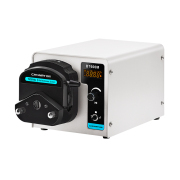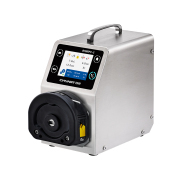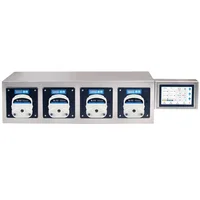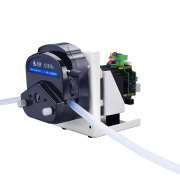Chonry Peristaltic Pump
Peristaltic Pump
Peristaltic Dosing Pump
The peristaltic dosing pump is a versatile tool for chemical dosing.peristaltic dosing pump The pump works by compressing and relaxing the hose, drawing the contents into the pump. When the hose is compressed, a rotating shoe passes along it, creating a seal and preventing the product from slipping out. When the hose is reconstituted, a strong vacuum is created. A robust hose and precision-extruded tube contain the medium to be pumped.
A peristaltic pump is particularly useful for low-flow systems.peristaltic dosing pump It works on suction-compression principle and is widely used in laundry systems and water treatment systems. These pumps are available in a wide range of flow rates, and their low-shear, gentle action make them ideal for many types of systems. In addition to their low energy consumption, peristaltic pumps are versatile and can handle up to 8-bar pressure. They also offer repeatable flow rates and are easily replaceable.
The SEKO peristaltic pump is an excellent choice for chemical dosing.peristaltic dosing pump Its IP65 rating ensures dust tightness and water jet resistance. This pump is also available with premium-grade tubing, which is perfect for aggressive fluids. In addition to these benefits, a peristaltic pump is also very affordable.
The occlusion ratio of a peristaltic pump is a key design consideration. In addition to flow rate, this parameter affects pump durability. A higher occlusion percentage means higher wear on the pump's tubing, reducing its overall lifespan. To reduce this, the inside diameter (ID) should be smaller than the outside diameter (ID) of the peristaltic pump.
Peristaltically-driven pumps are used in a wide range of applications, including metering of viscous and abrasive fluids. They can also be customized for different flow rates. They are available in a variety of sizes, including high-pressure and low-pressure versions.
Another important consideration when choosing a peristaltic pump is the material of the tubing. There are three basic types of materials used for peristaltic hoses. These include thermoplastic vulcanizate, PVC, and silicone. The silicone and PVC materials are typically on the softer end, while fluoroelastomeric tubing are tougher.
Peristaltic pumps are effective in pumping fluids that contain trapped gases. Fluids such as hydrogen peroxide and chlorine tend to release trapped gases when exposed to temperature changes. If these gasses build up inside the pump head, diaphragm pumps will most likely lose their prime and fail. Peristaltic pumps are also more suited to pumping fluids that contain particulates and off-gas.
Peristaltic pumps can be used in many biological systems. Their mechanism is based on the principle of positive displacement. This involves rollers that squeeze the flexible tube against the pump's housing, causing a vacuum and allowing more fluid to enter. Some peristaltic pumps combine the features of an IV pump with the bulk dosing demands of an industrial chemical pump.
The Grundfos DDE dosing pump is an economical entry-level pump with an automatic flow measurement function and a maximum turn-down ratio of 1: 1000. This pump is an excellent choice for mixing disinfectants, flocculants, and scale inhibitors in different water treatment applications. These pumps can handle up to 940 liters per minute, and are designed for multiple applications.
0users like this.







